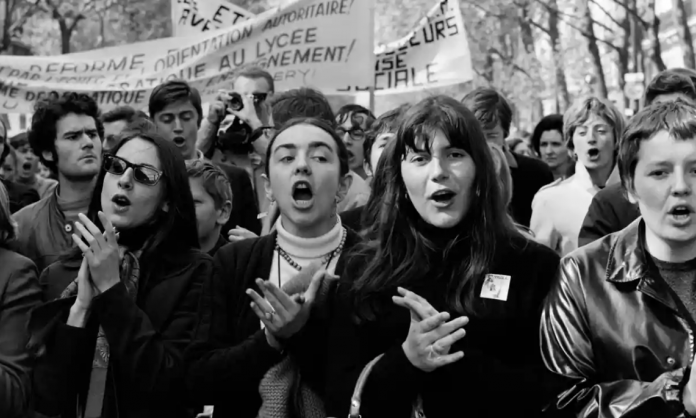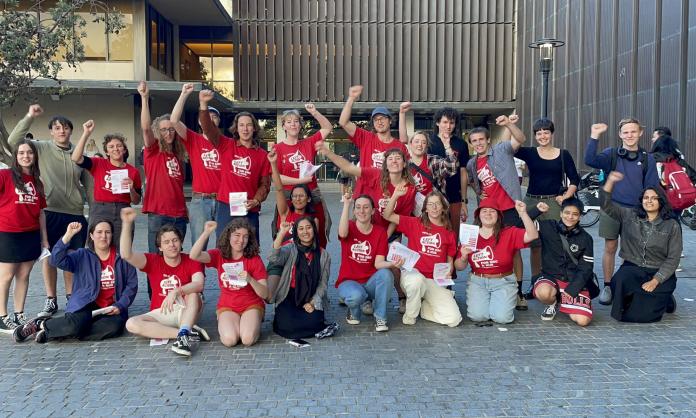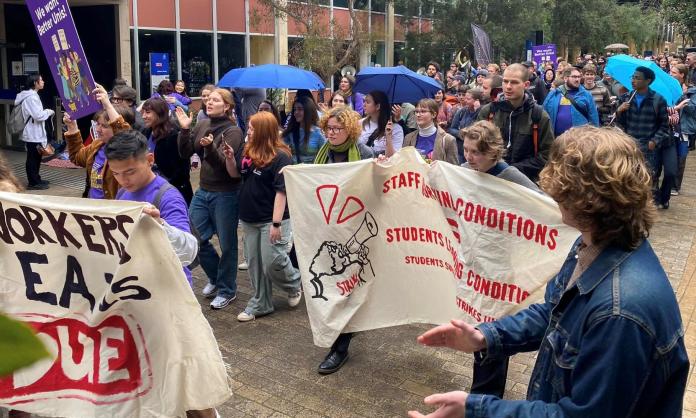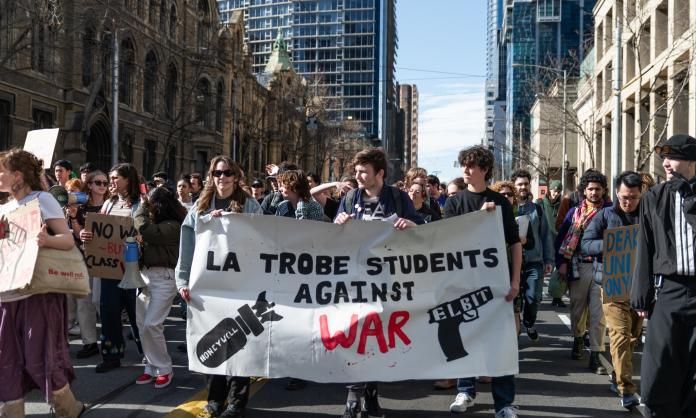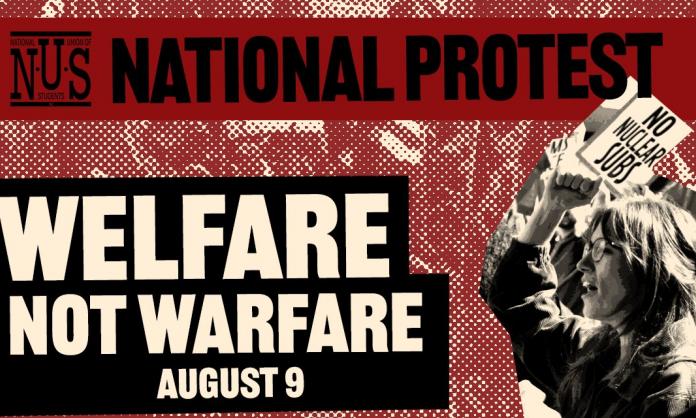In May 1968, over the course of not much more than a month, student protests against police repression in Paris sparked off a general strike of millions of workers, consuming French society for weeks and shattering the notion that capitalism could not be challenged in advanced industrial economies.
It began with a protest of university and high school students in Paris’ Latin Quarter on the evening of 10 May. Over the preceding two months, the police, collaborating with university heads, had been engaged in a crackdown on student protests against the Vietnam War. Students had developed their own strategies for dealing with this repression, so when police descended on their protest at 10pm, they knew what to do.
The students rapidly set up barricades using any material available, rigged with red flags and barbed wire, and prepared for a street battle. While protesters dashed out to pick up unexploded stun grenades and cobblestones ripped from the paving, lobbing them back towards police lines, local residents showed their solidarity by carrying injured students into their houses and tossing buckets of water from their balconies to disperse tear gas. Police were unable to regain control of the area until the following morning.
By that time, word of the Battle of the Barricades had spread. Many young workers had spent the night glued to live radio reports of students giving hell to the same police who smashed up their strikes and harassed them in their neighbourhoods. Representatives from the national student union and the two main trade union federations, the Communist-dominated CGT and the CFDT, met to call a general strike in opposition to police brutality. In response, 9 million workers stopped work, immobilising the country for 24 hours.
Left to the moderate leadership of the trade union federations, this might have been the final act of the French May. A one-day general strike of this size was certainly momentous, but didn’t threaten to burst the boundaries of French capitalism. In the Sud aviation factory in Nantes, however, workers had other ideas. For weeks, they had been holding 15-minute stop-works every Tuesday in opposition to wage cuts. When the 15 minutes were up on the Tuesday following the general strike, the Sud workers didn’t head back in to work as usual. Instead, 2,000 workers marched out of their departments, blockaded their manager in his office and set up an occupation of the factory.
Within days, factory occupations like that of the Sud workers had spread to Renault Billancourt, a union stronghold considered the most influential workplace in Paris. Once that domino fell, strikes sprung up in aviation, textiles, metalworking, railways, the postal service and beyond. One witness described the transformed mood in the factories: “The new strikers were euphoric. No more bosses, no more bullying, total freedom”.
More than 10 million workers were on strike, this time indefinitely. French society was upended: no part of the economy could move without labour. A new mood of confidence took hold. Teachers and students occupied Paris’ main fine art school, turning it over to the production of thousands of posters supporting the movement.
Repression became impossible: where the police had been prepared savagely to beat back even large student protests, they were impotent in the face of a millions-strong workers’ movement holding the reins of industry. Many police complained of having to conceal their badges and helmets to avoid being heckled in working-class neighbourhoods.
Ten years of apparent stability for French capitalism under the authoritarian government of the right wing ex-general Charles de Gaulle had been completely ruptured, with de Gaulle himself forced to flee the country. The still-very-real power of the working class was plain to see on the streets and in the occupied factories.
This explosion of radicalism, however abrupt it may have appeared from the outside, did not come out of nowhere. The student movement in France had been developing since the late 1950s. It drew from two main wellsprings. One was the condition of the universities themselves. Between 1950 and 1965, the proportion of university students in the population tripled. French universities were becoming mass institutions in which huge numbers of students were trained for their future roles in a sophisticated capitalist economy. Yet this transformation occurred with only pitiful injections of funding and resources from the government. Students with grand illusions in intellectual life were confronted with underfunded and overstretched universities, and soon protests broke out at campuses like Nanterre and the Sorbonne.
The other wellspring was anti-imperialist activism. Many students were first involved in activism through opposition to the French government’s brutal colonial war in Algeria in the 1950s. This tradition of anti-imperialist protest continued with French students’ involvement in the international movement against the Vietnam War. Students around the world were moved by Vietnamese resistance to the US’s criminal war, and in 1968 the Tet offensive by Vietnamese forces electrified the French anti-war movement, drawing thousands of students into protests and confrontations with the police.
These movements underpinned not just the sense of defiance and audacity that characterised the May events, but also some of its most influential student leaders. Student revolutionaries played a key role in attempting to link the struggles of workers and students.
As the mass strikes gained steam from 15 May, revolutionary students sought out young workers, eager to discuss and debate politics and strategy for the revolt. Hundreds of action committees were set up for this purpose: improvised groups that brought together students and rank-and-file workers to hash out political issues and try to deepen the strike movement.
Alongside the action committees, daily mass meetings took place in the occupied Sorbonne and the French national theatre, the Odeon. Here, the ideas of the revolutionary left could get a hearing amongst workers, who were already proving their own social power to themselves by shutting down French society. More and more, they sought out ideas which could connect their grievances at work and experiences on strike with an analysis of capitalism, and an argument to overthrow it.
One older Renault worker explained the impact of the student movement on his co-workers:
“In the first few days of May, every evening I took five or six workers in my car to the Sorbonne. When they returned to work the next day they were completely changed people... When a worker went to the Sorbonne he was recognised as a hero. Within Renault he was only a thing. In the university he became a man. This atmosphere of freedom in the sense of being considered human gave great combativity to the young workers.”
Tens of thousands of students and young workers came to identify themselves as revolutionaries of various stripes through the experience of May ’68.
At the same time that workers were gaining experience in struggle and militancy, the leaders of the major trade unions were preparing to lead their struggle into retreat. The French Communist Party in particular had for years put a lid on workers’ resistance. Shaped by the politics of Stalinism, the party had adapted to capitalism. Its strategy for change relied on running in elections with the even more moderate establishment Socialist Party, and organising token industrial actions as a supplement to polite negotiations between bosses and union officials, giving vent to the frustrations of workers without risking too much disruption to the economy. May ’68 was so remarkable in part because of how the student movement acted as a circuit breaker to this pattern, starting with the transformation of the toothless 15-minute strikes at Sud into an indefinite factory occupation.
Yet connecting workers’ struggle and student militancy was not enough on its own to dislodge totally the right-wing influence of the PCF leaders, who had built a mass organisation over decades and commanded the residual loyalty of many workers. In the absence of a comparable organisation to fight for uncompromising revolutionary politics, the moderate leadership of the unions could not be prevented from winding up the strikes.
This was not accomplished without a fight, however. CGT officials learned this when they presented the “Grenelle agreement” for a vote at Renault Billancourt, a deal that offered concessions to workers’ demands in return for an end to the general strikes. The key element of this deal was a 35 percent increase in minimum wages—less than the 600 francs workers were demanding. It offered nothing on other key demands like limits to working hours and improved pensions. At Billancourt, radical workers heckled the officials, and at most workplaces workers voted to continue striking until their factory-specific demands were met.
At this point, de Gaulle played his trump card. On 30 May, he called for the dissolution of parliament and a general election. For the Communist Party, securing parliamentary influence was an overriding priority. It was necessary, in their eyes, to end the strike movement as quickly as possible, proving their credentials as a reliable restraint on workers’ radicalism and clearing the way to focus on the elections.
To do so, they resorted to appallingly divisive tactics. Throughout the strike, the CGT had attempted to cut off contact between students and striking workers, even physically barring the gates of factories like Renault Billancourt to student activists. The votes on whether to accept the Grenelle concessions and end the strikes, meanwhile, were deliberately put to each factory individually. In some factories Communist Party newsletters were published and circulated reporting that the factory had voted to return to work—before any vote had actually happened!
Isolated from workers in different enterprises and industries, and from the student movement, individual workplaces were left vulnerable to pressure from the union leaders and were led back to work one by one. As a result, despite everything, de Gaulle was able to cling to power. The movement had ended in an uneasy stalemate although at one point the fate of French capitalism had seemingly hung in the balance.
The legacy of ’68, however, could not be totally erased. The de Gaulle government limped on for less than a year following the events of May. A generation of revolutionary activists, meanwhile, was shaped profoundly by the experience of the revolt. May ’68 stands as a testament to the possibility of revolutionary struggles, to the power of the working class and to the capacity of students to act as a social detonator, able to shake even the most seemingly stable capitalist society.




